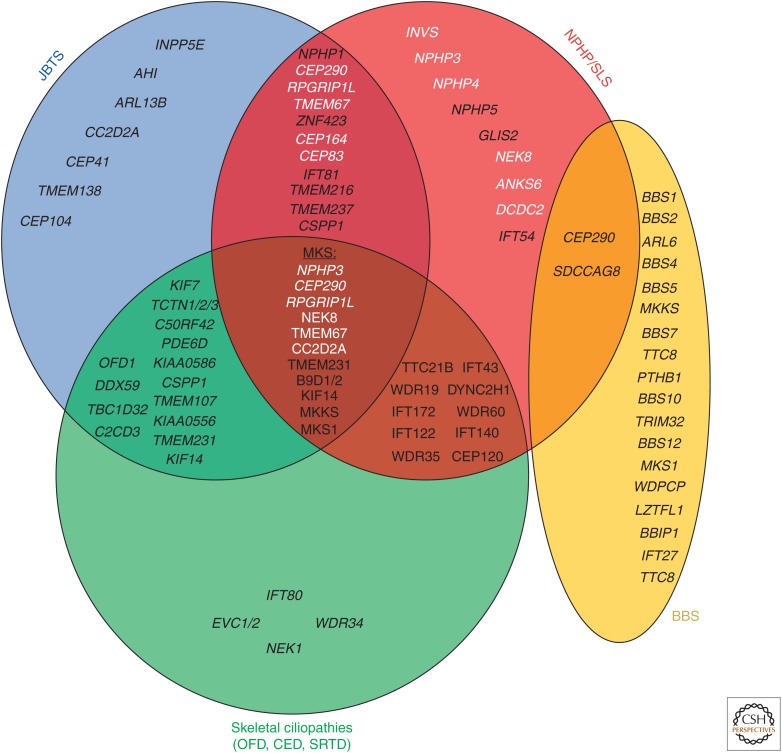Figure 1.
Monogenic genes of nephronophthisis-related ciliopathies (NPHP-RC) cause distinct but widely overlapping phenotypes. Monogenic genes of NPHP-RC are categorized into four major phenotypes, namely, JBTS (blue, Joubert syndrome [JBTS]: congenital brain malformations, cerebellar vermis hypoplasia, and intellectual disability), NPHP/SLS (red, nephronophthisis/Senior–Loken syndrome [SLS]: nephronophthisis [NPHP], retinal degeneration, coloboma), BBS (yellow, Bardet–Biedl syndrome [BBS]: obesity, intellectual disability, retinal degeneration, cystic kidney disease, polydactyly, hypogonadisms), and skeletal ciliopathies (green, oral-facial-digital syndrome [OFD], cranioectodermal dysplasia (CED), short-rib thoracic dysplasia [SRTD]). As shown in a Venn diagram, numerous genes can give rise to overlapping phenotypes if mutated. Meckel–Gruber syndrome (MKS), the most severe clinical manifestation of NPHP-RC, can be caused by mutations in 10 monogenic genes. With the exception of the genes B9D1 and B9D2 that have not been described in association with other phenotypes, MKS is caused by mutations in monogenic genes of nephronophthisis, Joubert syndrome, and Bardet–Biedl syndrome on an allelic basis. White text indicates genes in which liver involvement has been reported.

